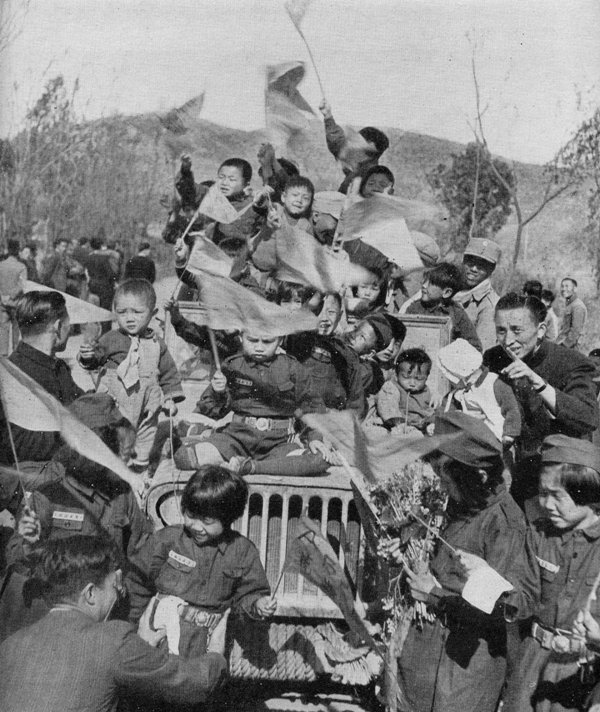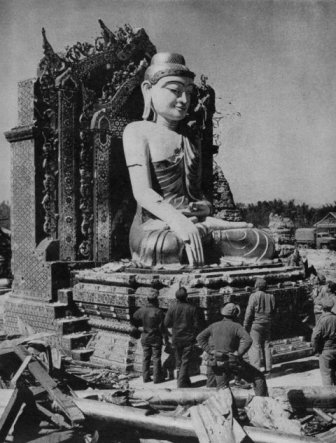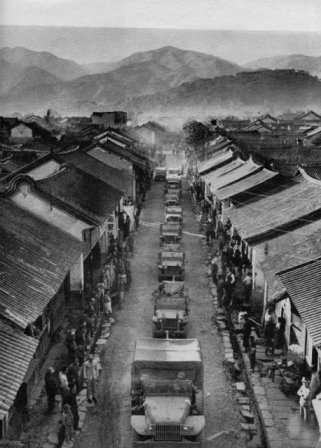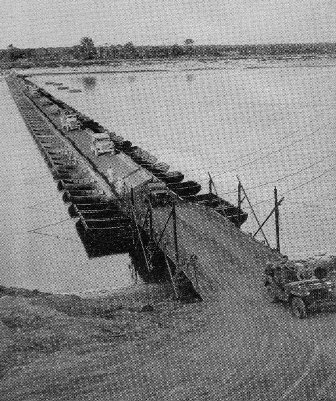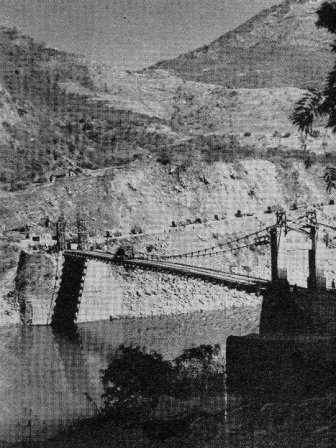 |
|
The first U.S. truck convoy to reach China since 1942 arrives at Kunming after a journey of 1,000 miles
In January a convoy of trucks formed at Ledo in India's tea-growing province of Assam and starteddown a fresh-cut road to the south. It is now the dry season in Burma and the trucks growled along in acolumn of dust. At the beginning they crossed a range of 5,000-ft. mountains but they were soon in thegreen valleys of northern Burma. At Myitkyina, captured by Allied soldiers late last summer, the trucksstopped for a while. When they heard the road had been cleared of Japanese to the south, the drive started off again, rolling past bodies of newly killed Japanese into the barren mountains and valleysof southwestern China. After a journey of 1,000 miles from Ledo, the trucks arrived at Kunming. It wasthe first convoy to China since the Japanese cut the old Burma Road in May of 1942.
When the trucks rolled into China, Chiang Kai-shek gave the new road a new name: The Stilwell Road.The Burma Road had begun at Lashio, which is still held by the Japanese to the south. The new road cutsacross the top of Burma to join the old one north of Lashio. While it was being built it was calledthe Ledo Road, or sometimes "Pick's Pike" after its builder, Brig. General Lewis A. Pick. Now theGeneralissimo had named the road after the American commander who was too plain-spoken with him to stayin Asia but who made the road possible.
|
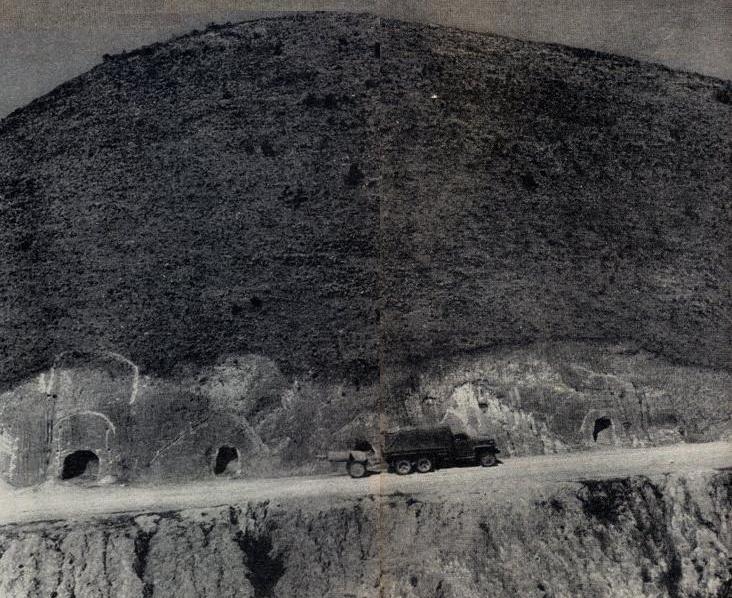 |
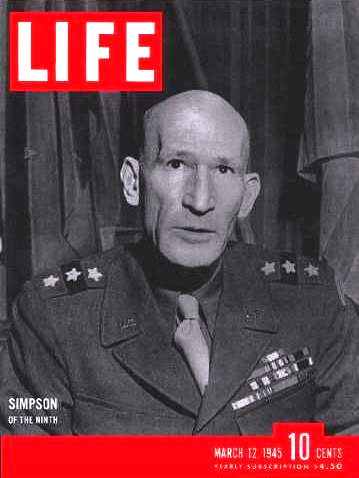
LIFE'S COVER: Lieut. General William Hood Simpson, commander of the Ninth Army at the Rhine, is anold soldier: tough-minded, dependable and confident. He is a tall man, lean and immaculately dressed.The most arresting thing about his appearance is his remarkable head. It is a head that reminds peopleof Biblical prophets, medieval aesthetics and ancient Egyptian kings. Wrote a LIFE correspondent, "Atfirst glance it seems so bony, so cadaverously lean that you think of it as a friendly skull.

Adapted by Carl W. WEeidenburner
from the March 12, 1945 issue.
Portions copyright 1945 Time, Inc.
FOR PRIVATE NON-COMMERCIAL HISTORICAL REFERENCE ONLY
TOP OF PAGE ABOUT THIS PAGE
MORE CBI FROM LIFE MAGAZINE
CLOSE THIS WINDOW
